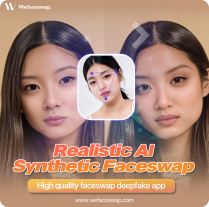How Face Swap Technology is Transforming Photo Editing
How Face Swap Technology is Transforming Photo Editing
Blog Article
AI Face Swap in Entertainment and Beyond
The change of face change engineering from a nice novelty to a popular tendency is nothing lacking fascinating. Originating as an enjoyable filtration on early photo apps, experience trades have today become an intrinsic element of social media marketing material development and also professional industries. Having its rapid evolution and climbing popularity, deepswap engineering has fascinated millions worldwide. Platforms like Experience Swap have performed an important role in this trend, offering advanced and progressive face replacing practices which are an easy task to use.

Deepswap is just a cutting-edge deep learning engineering that enables for supreme quality experience swaps with just a couple of clicks. It utilizes synthetic intelligence (AI) formulas to analyze facial features and seamlessly change them with yet another person's. It's opened up a world of creative opportunities, allowing customers to produce jaw-dropping aesthetic results and special content. Let's examine some of the interesting projects you can make with Deepswap.
The Early Times of Face Change
Experience swap technology first seemed in the early 2010s with simple photo-editing apps. These early iterations were frequently clunky, producing hilarious but glitchy results that fueled their appeal simply as entertainment. Users could exchange people with buddies, pets, as well as superstars, sharing these hilarious images on social media marketing platforms. While rudimentary, that entry-level technology exposed the door for developers to discover its untapped potential further.
Growth Forced by Social Press
Fast ahead to the mid-2010s, and the increase of programs like Snapchat and Instagram catapulted face swaps into conventional culture. What was after restricted to fixed pictures was today being developed into real-time video filters. FaceSwap, Snapchat's iconic contact, became among their most widely used functions, interesting countless customers daily. Reports claim that by 2016, approximately 60% of Snapchat users had tried its experience change feature at least once.
Simultaneously, social networking influencers began adopting face swaps for content creation, heightening involvement through creativity and humor. That growing development further cemented the technology's existence in popular tradition, planning beyond entertainment and emerging as a robust software for storytelling.
Sophisticated Technology and Broader Purposes
Today, advancements in artificial intelligence (AI) and machine understanding have improved experience swap methods, making them more accurate and convincing than their predecessors. Deepfake technology represents the cutting-edge sphere of face swapping, allowing hyper-realistic overlays of one face onto another. Beyond entertainment, professional fields like filmmaking, marketing, and also virtual knowledge have embraced these innovations.

For example, in 2021, studies suggested that almost 15% of digital marketers were trying out AI-driven movie personalization applying sophisticated face swaps. That change shows how face swap engineering is crossing in to sensible purposes, pushing its rising popularity.
A Tendency on the Increase
What makes experience trades evergreen is their supply and adaptability. Because of mobile-friendly apps driven by AI, everyone can test out experience trades without specialized expertise. Whether for lighthearted enjoyment or professional use, the growth of the technology implies continued growth.
From its simple beginnings as a photo-editing uniqueness to its modern-day applications in AI and advertising, experience trade engineering has changed remarkably. With more advancements on the horizon, this trend is set to steadfastly keep up their recognition for a long time to come.
Report this page